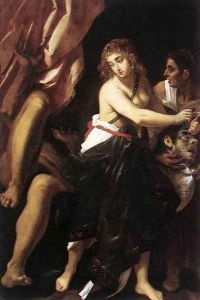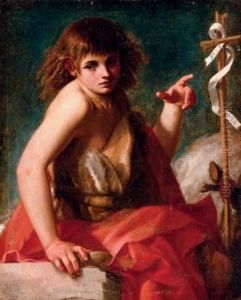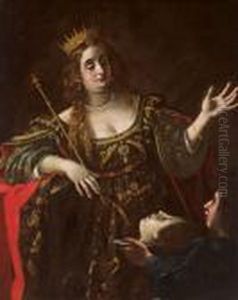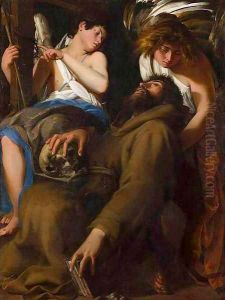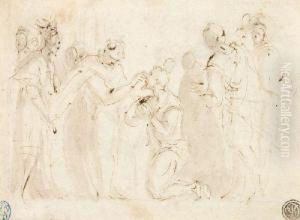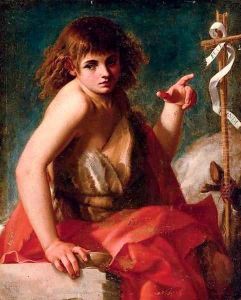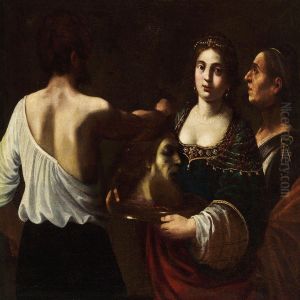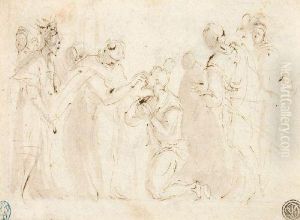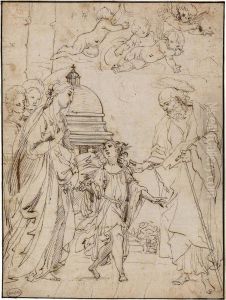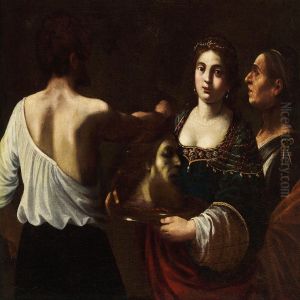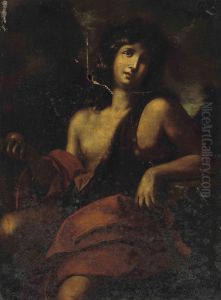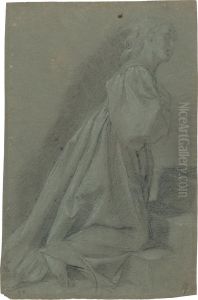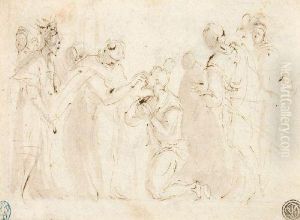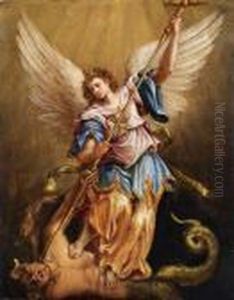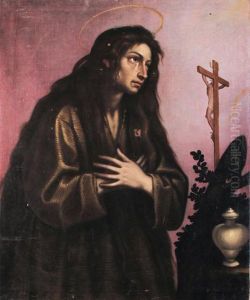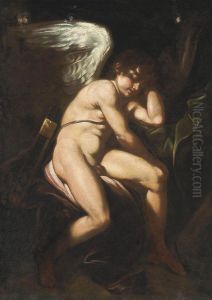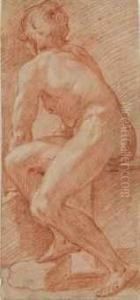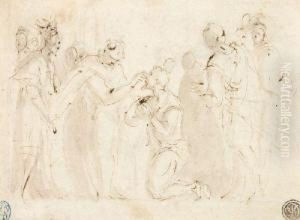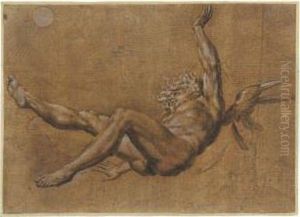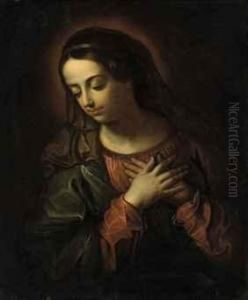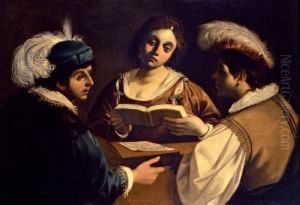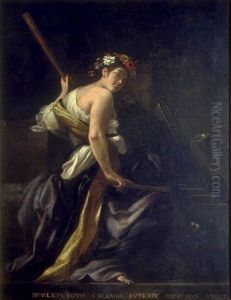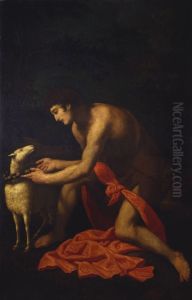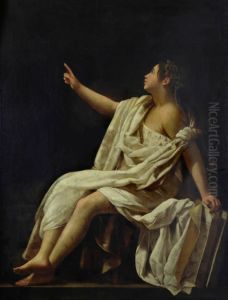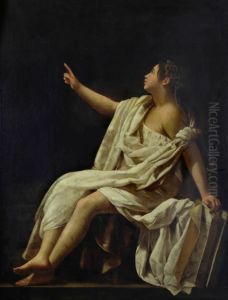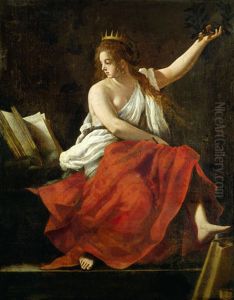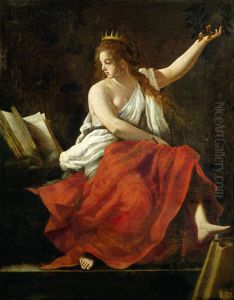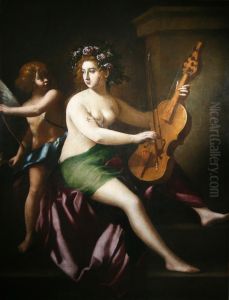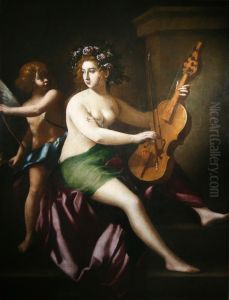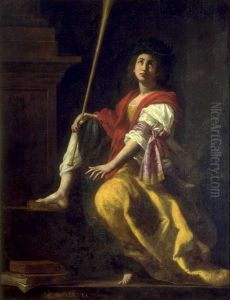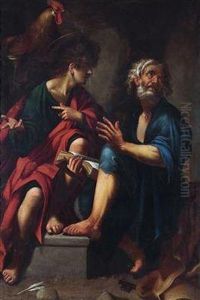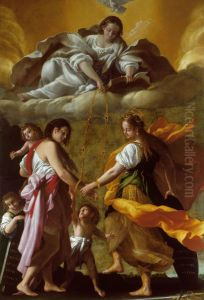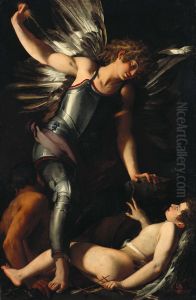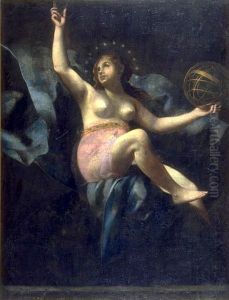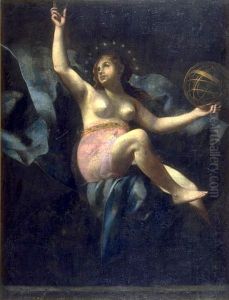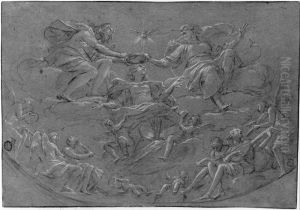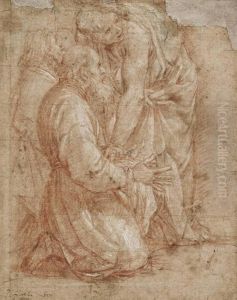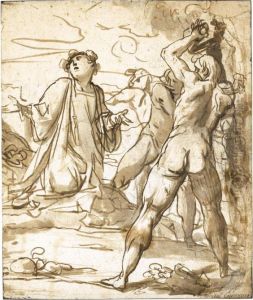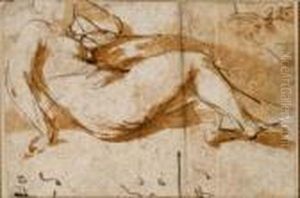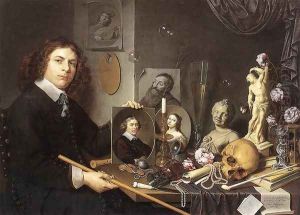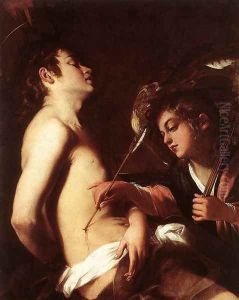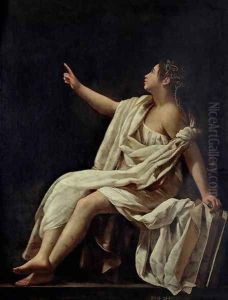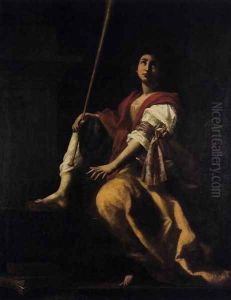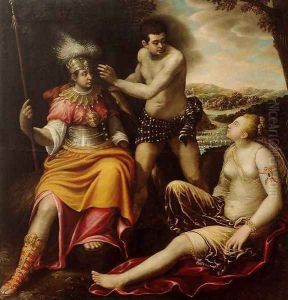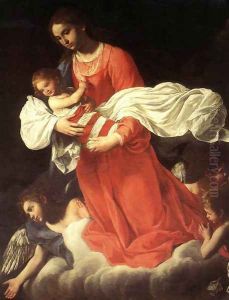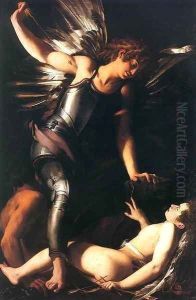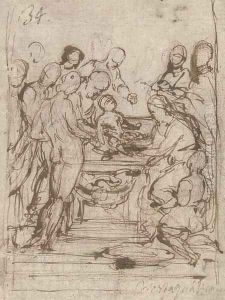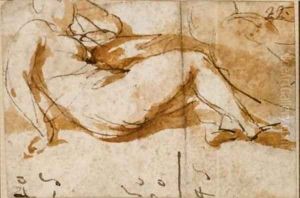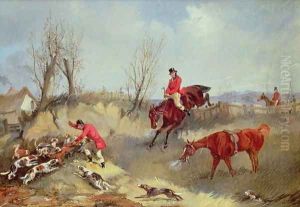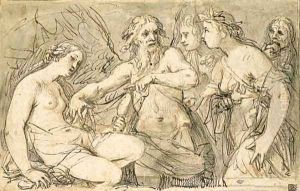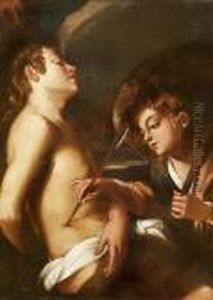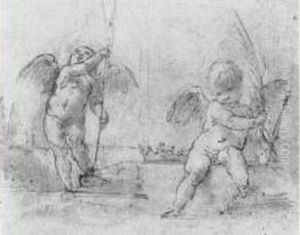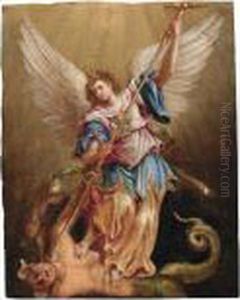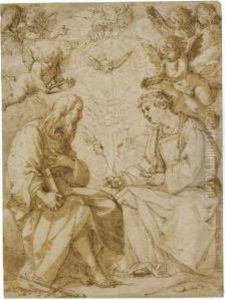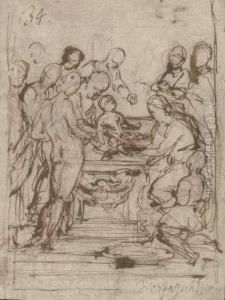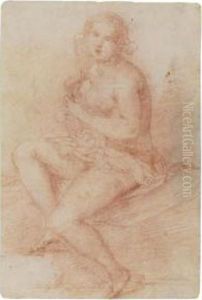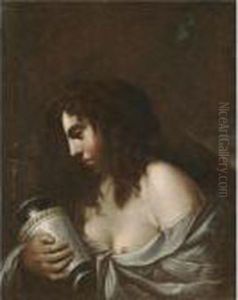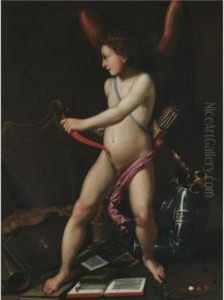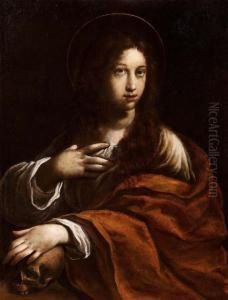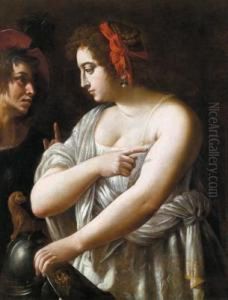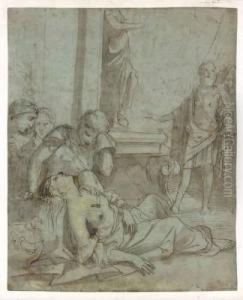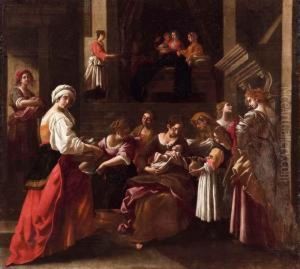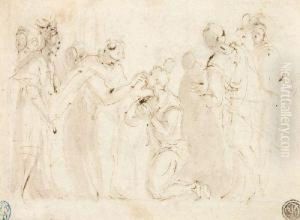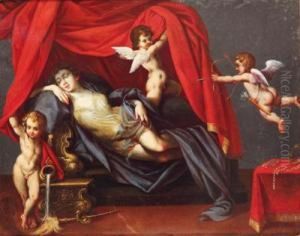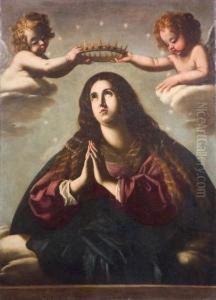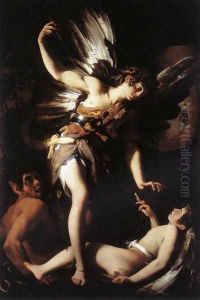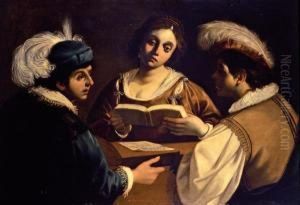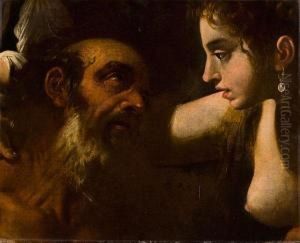Giovanni Baglione Paintings
Giovanni Baglione was an Italian Late Mannerist and early Baroque painter as well as a critic and historian of art. Born in Rome in 1566, he was active during a dynamic period in the history of Roman art, which saw the city becoming a vibrant center for artistic innovation. Baglione is perhaps best known for his contentious relationship with the artist Caravaggio and the circle of young painters that surrounded Caravaggio.
Baglione's early works exhibit the influence of the Mannerist style, characterized by elegant, elongated figures and the use of artificial colors and lighting. He was initially influenced by his contemporaries in Rome and played a part in the city's artistic developments. However, after encountering the revolutionary naturalism of Caravaggio's work, Baglione's style underwent a significant transformation. Despite their rivalry, Caravaggio's attention to realistic details and strong chiaroscuro had an evident impact on Baglione's later paintings.
The rivalry between Baglione and Caravaggio was both personal and professional. Baglione took Caravaggio to court in 1603, accusing him of libel after Caravaggio wrote some derogatory verses about him. Baglione's legal victory, however, did not put an end to the animosity. In 1603, Baglione painted 'The Divine Eros Defeats the Earthly Eros,' which was seen as a direct response to Caravaggio's provocative 'Amor Vincit Omnia.' Baglione's painting was an allegorical work that criticized the moral content of Caravaggio's art while also demonstrating his own mastery of Caravaggio's naturalistic style.
Beyond his paintings, Baglione also contributed to art history with his biographical writing. His book 'Le Vite de’ Pittori, Scultori, Architetti, ed Intagliatori dal Pontificato di Gregorio XIII del 1572 fino a’ tempi de Papa Urbano Ottavo nel 1642' is a significant source for the lives and works of artists from the late 16th to the early 17th century, including a contentious biography of Caravaggio. While often biased, Baglione's accounts provide valuable insights into the art and culture of his time.
Baglione continued to paint and receive commissions throughout his life, including altarpieces for Roman churches and portraits. His later works fully embraced the Baroque style, which was becoming increasingly popular at the time, and he is credited with helping to transition Roman art from Mannerism to Baroque. Giovanni Baglione died in Rome in 1643, leaving behind a body of work that reflects the turbulent and transformative era of art in which he lived.
